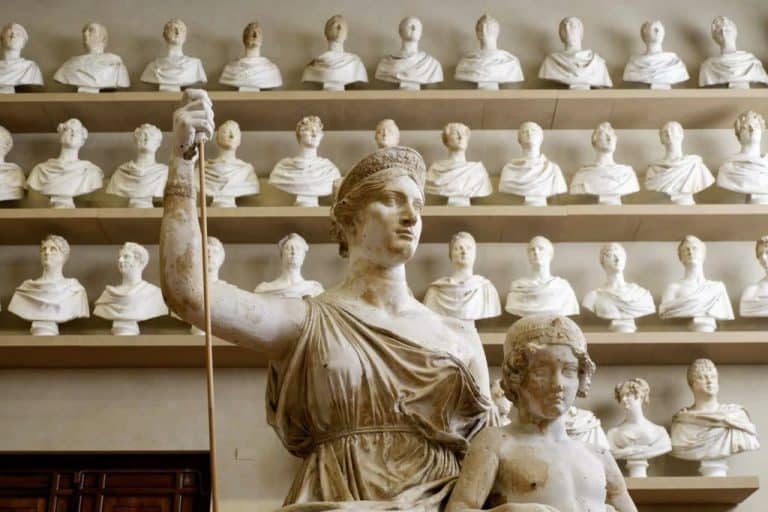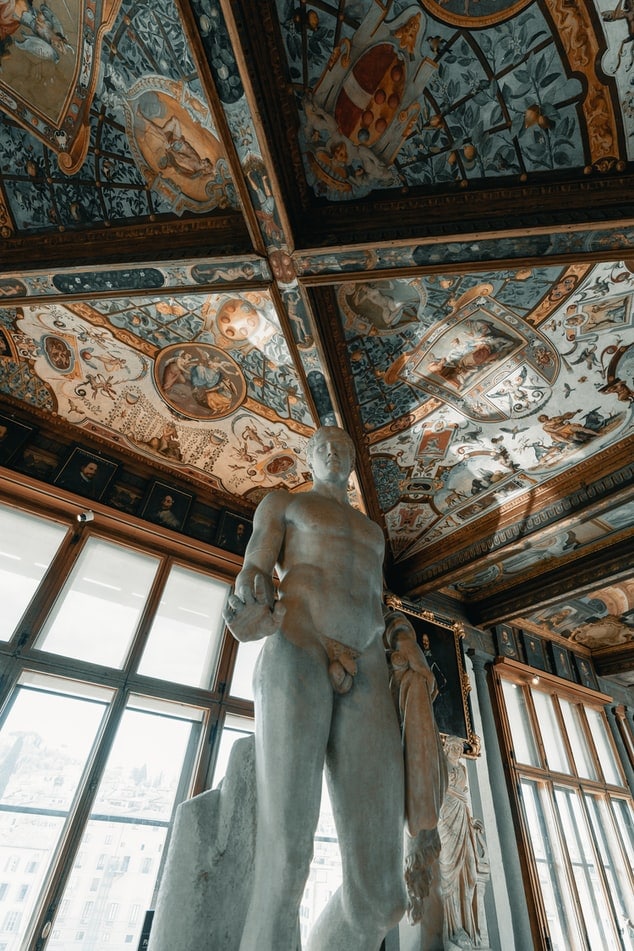History of the protection of cultural heritage
The protection of cultural heritage is an action that is still the basis of the legislative discipline today.
Attention to the danger of dispersion of works of art can be found already in classical antiquity. Famous is the fourth oration of the Verrines, written by Cicero on the occasion of a criminal case against Verre, former owner of Sicily. in this oratory, Cicero argues in fact the importance of the belonging of works of art to a civilization, as bearers of religious and ideological values.
In the following centuries, the concept of protecting works of art was increasingly taken into consideration. The historical memory, identity of the society of which it is an expression, becomes the foundation of the society itself. Raphael also spoke of protection, in the famous letter addressed to Pope Leo X (see the article on Raphael).
But the act that appeared most of all as the desire to keep a collection intact was the famous bequest of Anna Maria Luisa de ‘Medici.
In 1737, with the death of her brother Gian Gastone, she inherited its possessions and assets, while the noble title passed to the Lorraine family. On October 31 of the same year, the Medici stipulated the famous “Family Pact” with the latter, which established that the Lorraine family could not “remove from the capital and the state of the Grand Duchy […] Galleries, Paintings, Statues , Libraries, Gioje and other precious things […] of the succession of the Most Serene Grand Duke, so that they could remain for the ornament of the State, for the benefit of the public and to attract the curiosity of foreigners. “.
This very important testamentary legacy prevented Florence from suffering the dispersion of its cultural heritage, as had instead happened to other cities of the peninsula following the decline of the noble ruling families. If certainly it is emblematic of how works of art began to be understood not only as private property but as assets that belong to the community and to the place to which they are linked, both for commission and for collecting reasons.

The first real protection law dates back to 1820.
The historical moment is the most propitious one: a few years earlier the Italian kingdoms had been victims of the Napoleonic requisitions and with the fall of the emperor, an artist of the caliber of Antonio Canova had been commissioned by the Papal State to recover the looted works of art. The sculptor in fact went to Paris, where he succeeded, albeit partially, in his intent, bringing back works such as Leo X with cardinals Giulio de ‘Medici and Luigi de’ Rossi by Raphael or the Laocoon.
The papal state itself decided, therefore, to explicitly legislate for the protection of cultural heritage.
In fact, in the edict of Cardinal Pacca the foundations were laid, starting from the census of goods and monuments, of modern legislation. In particular, in addition to paying attention not to damage the buildings, special attention was paid to movable property, to avoid their sale but above all export.
The post-unification state also paid attention to cultural heritage, for example with the 1872 draft law by Cesare Correnti, with the awareness that what was testimony to the civilization that came to constitute with the unification of Italy.

The modern legislative system only started in the twentieth century.
In 1902 there was the first law (l. 185/1902, or Nasi Law) on national protection, in particular on the “Protection of monumental heritage”, which was followed by l. 364/1909 (Rosadi-Rava Law) “For antiquities and fine arts”.
With the latter in particular, the notification procedure was presented, formalizing the individual assets to be subjected to protection activities. These remained in force until a very important year, 1939, when two laws on
protection were promulgated, no. 1089 which dealt with the protection of things of historical and artistic interest and n. 1497 which instead dealt with natural beauties. The basis of both laws was, reiterating what was already presented in the previous legislation, the preventive need to identify things or places of cultural or aesthetic interest, in order to protect it and, therefore, to preserve it.
The Central Institute for Restoration (ICR) was also founded in 1939, further reiterating the primary importance of activities such as protection and conservation.

A significant historical moment also for our subject was World War II and the following years.
The passage from the monarchy to the republic and the introduction of the new constitution had done nothing but reaffirm the importance of cultural heritage. In particular, reference is made to article 9, in which “The Republic promotes the development of culture and scientific and technical research. It protects the landscape and the historical and artistic heritage of the Nation”. This article was immediately acknowledged and, by now aware that the protection had to pass through knowledge and, therefore, the inventory of the heritage, in 1964 the Franceschini Commission was established, this “Commission of investigation for the protection and enhancement of property. historical, archaeological, artistic and landscape interest “took care of drawing up the conclusions, still today the basis of the legislative notion of cultural heritage.
The Galasso law of 1985 was a clear derivation from previous decades of strong political and social change. In fact, it was decided to place restrictions on the areas of particular environmental interest throughout the country.
This ever-increasing attention to cultural heritage was not a purely Italian prerogative, although a greater interest on the part of our nation is certainly understandable, by virtue of the huge amount of world artistic heritage preserved here.
Unesco was founded in 1945 and in the following decades there were various conventions and treaties which had as their object the protection of works of art.
This quick presentation of the legislative history regarding cultural heritage, obviously aware of having limited itself to key events, ends with the issue in 1999 of the Consolidated Law which, however, could legally limit itself to gathering and harmonizing the legislation already in force, without affixing any changes.
The innovating of the legislation in the field of cultural heritage was now a necessity, in fact in 2004 the new “Code of cultural heritage and landscape” was issued.





